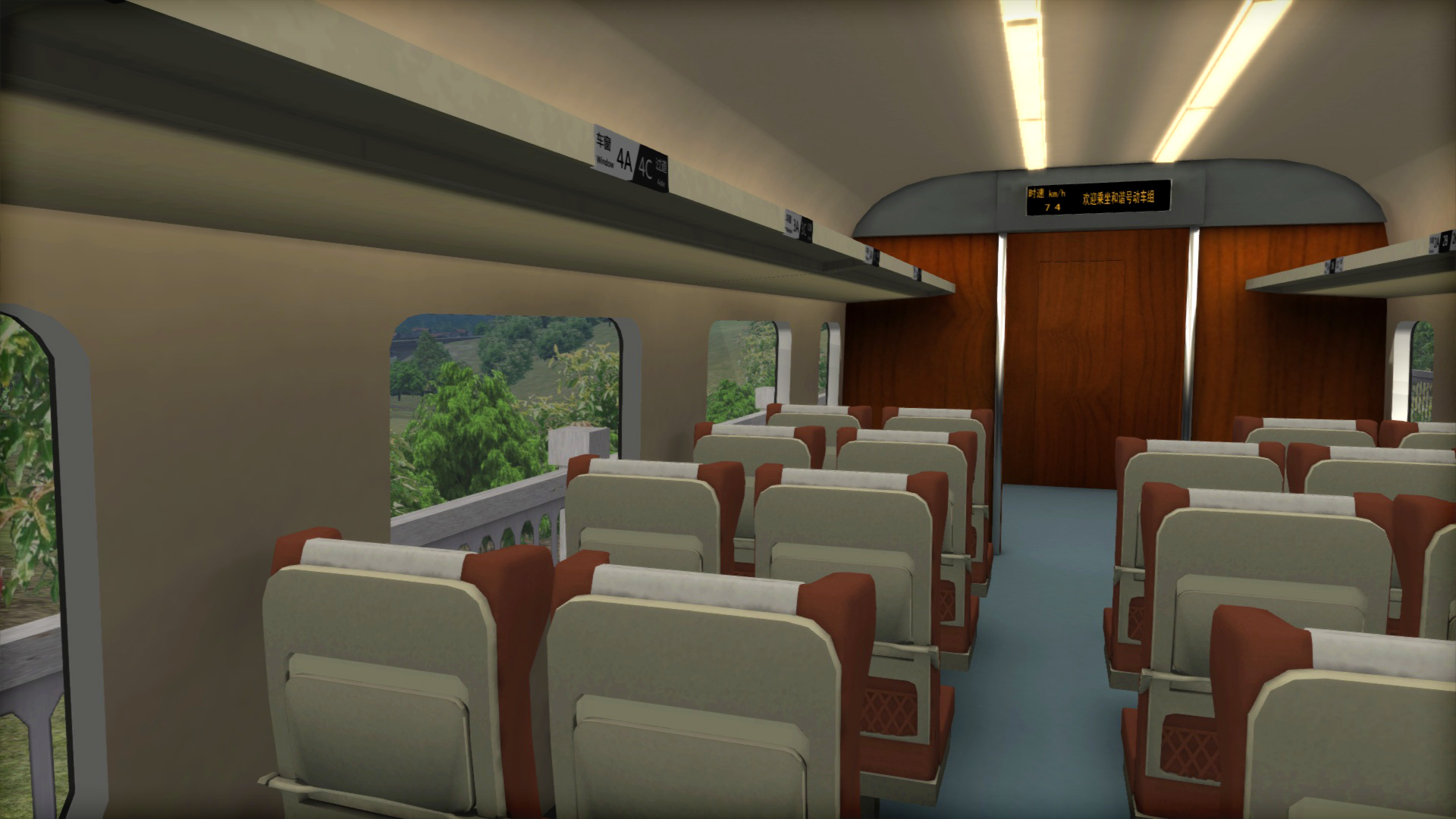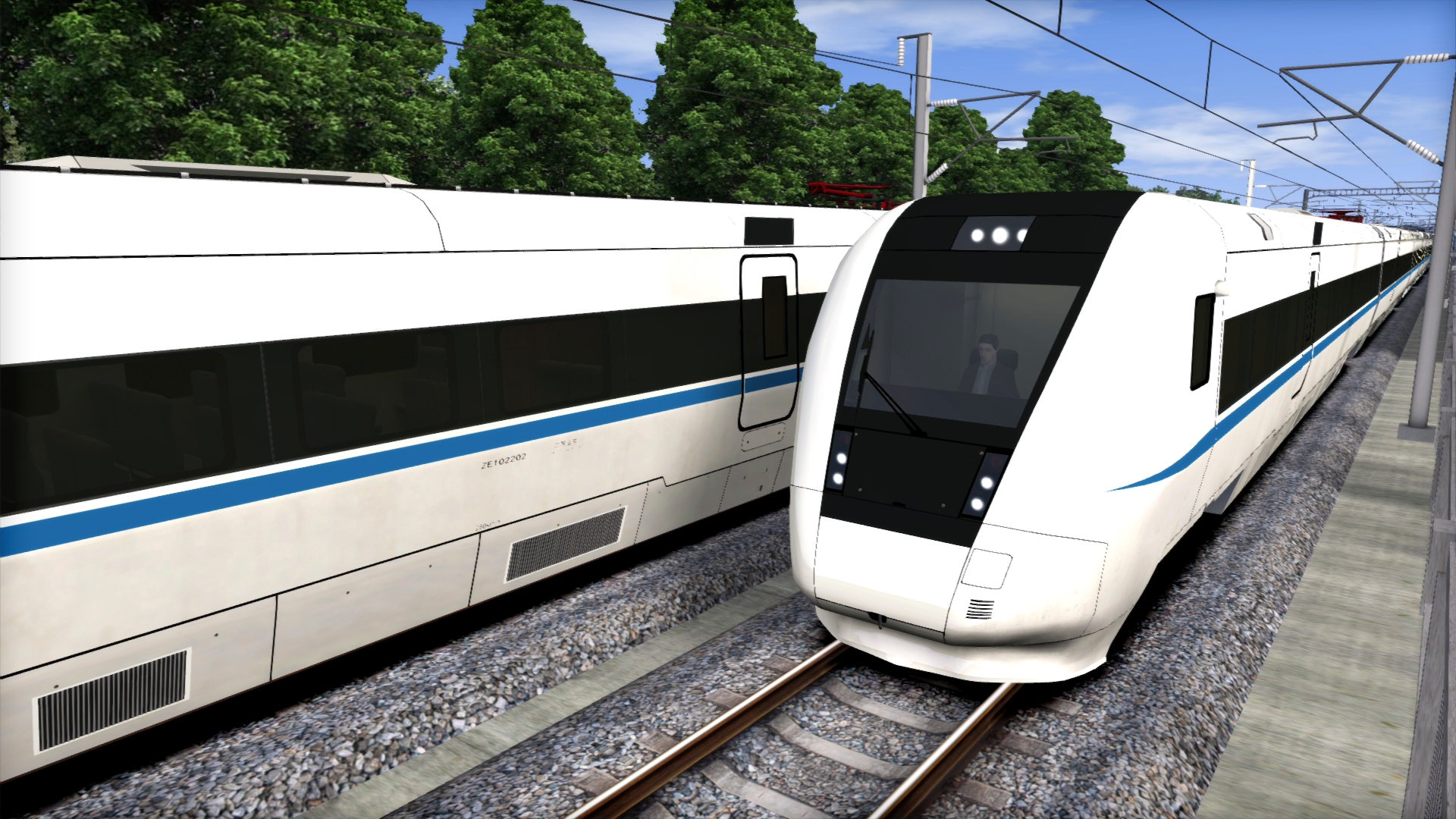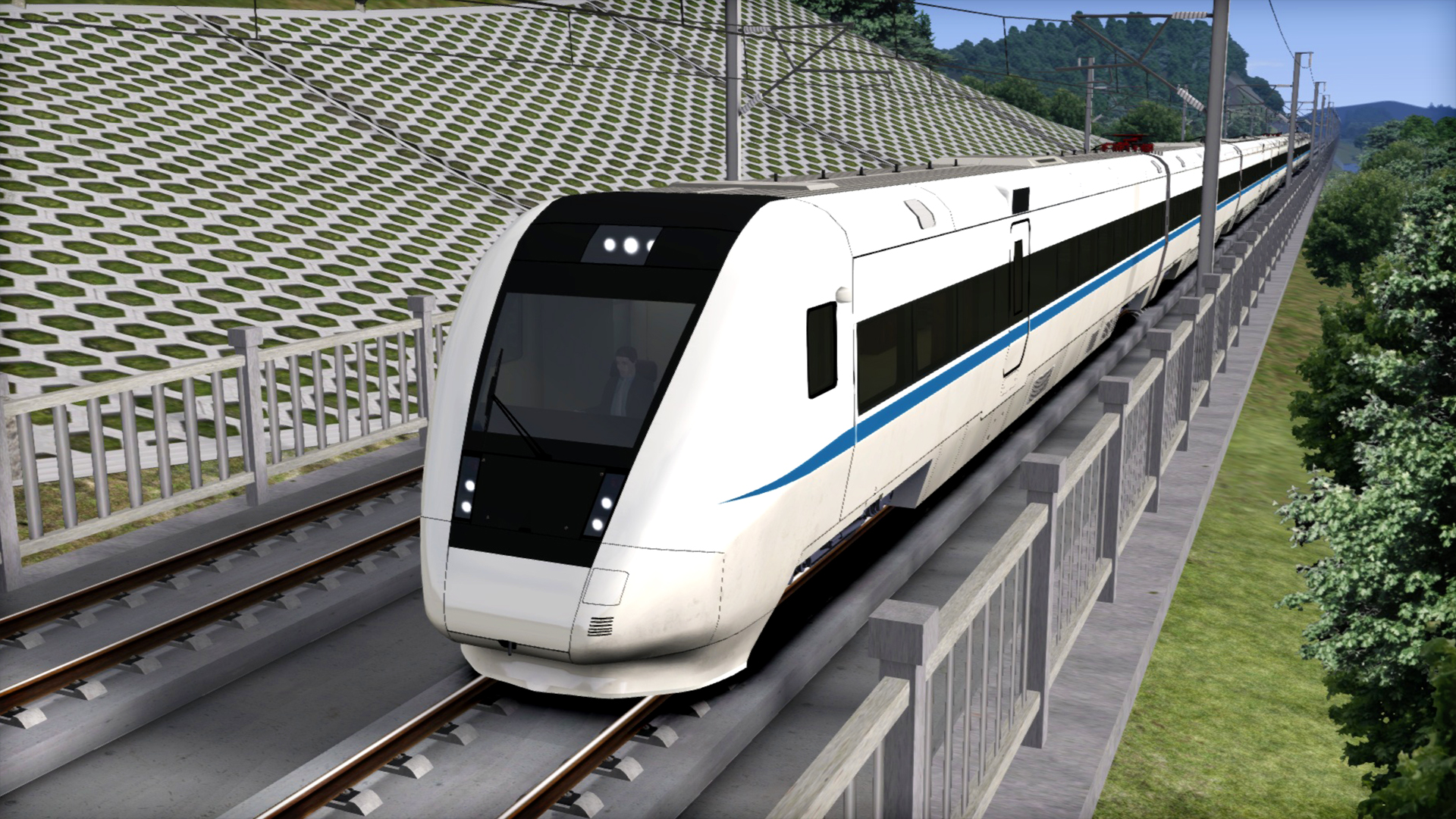Train Simulator: South West China High Speed Route Add-On
Boasting over 570 km of truly rapid inter-city travel, the Southwest China High Speed Network, available for Train Simulator, is a wonder in and of itself; watch high-flying viaducts and scenic valleys soar past as you embark on one of the fastest sets of rails in the world courtesy of Partner Programme Developer Just Trains.
China has the largest High Speed Rail network in the world, with new, passenger-dedicated lines spanning a phenomenal 22,000 km across the mammoth nation, whisking millions of passengers between 29 of the country’s Provinces at speeds in excess of 350 km/h.
This vast network began in 1997 when a radical series of ‘Speed Up’ campaigns were undertaken to improve the sorry-state railways of China. Diesel-powered passenger trains were forced into sharing tracks with freight across the country, and when combined with the limiting topography that governed the network, many services were losing out to road and air traffic.
Between 1997 and 2004, five total ‘Speed Up’ campaigns were undertaken. Extra track was laid, many routes were electrified, steep grades were shallowed with tunnels and viaducts plus much more. By December 1994, the Guangzhou-Shenzhen Railway was operating at 160 km/h, the first line to offer such a speed – only years later, this would be increased to 200 km/h post-electrification. This railway was also the first to separate freight and passenger operations, this was made possible in 2000 and 2007 by opening a third and fourth track; for sure, the Guangzhou-Shenzhen Railway served as a model for what the whole country was destined to become.
By 2007, the first high speed rail lines had been completed, allowing for 250 km/h operation. Following the initial success, new routes would start sprouting across the country, and it wasn’t long before 350, even 380 km/h service was possible between the prominent cities and regions of China.
To lessen the impact on journey times, and to avoid the costs of land acquisition, a significant percentage of the Chinese High-Speed Railway network is built upon vast viaducts. Similarly, many tunnels are also present, further keeping the track as level as possible for the trains that cut through the landscape.
By 2011, passenger numbers had surpassed those of the major short-haul local flights, which found themselves all but replaced by high speed rail; people would opt to travel on the cheaper and hassle-free journeys through the countryside. Fast forward, and China’s high speed railway network handled over 1.44 Billion passengers in 2016, a record-breaking feat.
In order to operate this vast network, China was in need of various high speed train designs that would be capable of rapid acceleration, maintaining comfort, and above all – achieving high speeds. Ensuring local self-sustainability in the Chinese manufacturing plants, technology transfers were requested as part of the rolling stock bid; this would allow foreign successes to be utilised on the growing high speed lines.
One company in particular, Bombardier, had been sharing technology with China since 1998 and was able to provide their Regina family for 250 km/h operations on the new dedicated high speed lines. Construction of the new EMUs, which were classified as the CRH1A, was a joint venture between Bombardier and China’s manufacturers and a total of 186 8-car units exist today. Another of Bombardier’s designs, based on their Zefiro 250 family, was ordered as the CRH1E; a 16-car high speed sleeper EMU, the first of its kind in the world.
From Just Trains, the Southwest China High Speed Network delivers the breath-taking experience of racing through 570km-worth of Chinese valleys and hills.
• CRH1A EMU
• CRH1E EMU
The Southwest China High Speed Network includes 15 challenging scenarios:
More scenarios are available on Steam Workshop online and in-game. Train Simulator’s Steam Workshop scenarios are free and easy to download, adding many more hours of exciting gameplay. With scenarios being added daily, why don’t you check it out now!
China has the largest High Speed Rail network in the world, with new, passenger-dedicated lines spanning a phenomenal 22,000 km across the mammoth nation, whisking millions of passengers between 29 of the country’s Provinces at speeds in excess of 350 km/h.
This vast network began in 1997 when a radical series of ‘Speed Up’ campaigns were undertaken to improve the sorry-state railways of China. Diesel-powered passenger trains were forced into sharing tracks with freight across the country, and when combined with the limiting topography that governed the network, many services were losing out to road and air traffic.
Between 1997 and 2004, five total ‘Speed Up’ campaigns were undertaken. Extra track was laid, many routes were electrified, steep grades were shallowed with tunnels and viaducts plus much more. By December 1994, the Guangzhou-Shenzhen Railway was operating at 160 km/h, the first line to offer such a speed – only years later, this would be increased to 200 km/h post-electrification. This railway was also the first to separate freight and passenger operations, this was made possible in 2000 and 2007 by opening a third and fourth track; for sure, the Guangzhou-Shenzhen Railway served as a model for what the whole country was destined to become.
By 2007, the first high speed rail lines had been completed, allowing for 250 km/h operation. Following the initial success, new routes would start sprouting across the country, and it wasn’t long before 350, even 380 km/h service was possible between the prominent cities and regions of China.
To lessen the impact on journey times, and to avoid the costs of land acquisition, a significant percentage of the Chinese High-Speed Railway network is built upon vast viaducts. Similarly, many tunnels are also present, further keeping the track as level as possible for the trains that cut through the landscape.
By 2011, passenger numbers had surpassed those of the major short-haul local flights, which found themselves all but replaced by high speed rail; people would opt to travel on the cheaper and hassle-free journeys through the countryside. Fast forward, and China’s high speed railway network handled over 1.44 Billion passengers in 2016, a record-breaking feat.
In order to operate this vast network, China was in need of various high speed train designs that would be capable of rapid acceleration, maintaining comfort, and above all – achieving high speeds. Ensuring local self-sustainability in the Chinese manufacturing plants, technology transfers were requested as part of the rolling stock bid; this would allow foreign successes to be utilised on the growing high speed lines.
One company in particular, Bombardier, had been sharing technology with China since 1998 and was able to provide their Regina family for 250 km/h operations on the new dedicated high speed lines. Construction of the new EMUs, which were classified as the CRH1A, was a joint venture between Bombardier and China’s manufacturers and a total of 186 8-car units exist today. Another of Bombardier’s designs, based on their Zefiro 250 family, was ordered as the CRH1E; a 16-car high speed sleeper EMU, the first of its kind in the world.
From Just Trains, the Southwest China High Speed Network delivers the breath-taking experience of racing through 570km-worth of Chinese valleys and hills.
Included Rolling Stock
• CRH1A EMU
• CRH1E EMU
Included Scenarios
The Southwest China High Speed Network includes 15 challenging scenarios:
Career
- CRH1E-1. Night Express
- CRH1E-2. Short commuter run
- CRH1E-3. Evening Express
Standard
- CRH1A-01. Introduction to CRH1A
- CRH1A-02. Fast Service to Jijin
- CRH1A-03. Bad weather run
- CRH1A-04. Short passenger run
- CRH1A-05. Night express
- CRH1A-06. Commuter service
- CRH1A-07. Evening Express to Nanchong
- CRH1A-08. Wusheng to Suining Express
- CRH1A-09. Guang’an to Nanchong Express
- CRH1A-10. Chongqing to Wusheng
- CRH1A-11. Suining to Chongqing North
- CRH1A-12. Chongqing Borth to Nanchong
More scenarios are available on Steam Workshop online and in-game. Train Simulator’s Steam Workshop scenarios are free and easy to download, adding many more hours of exciting gameplay. With scenarios being added daily, why don’t you check it out now!
Key Features
- 570km high-speed network in Southwest China
- Chengdu – Suining: 146km
- Suining – Chongqing: 156km
- Suining – Nanchong: 63km
- Nanchong – Chongqing: 170km
- Wusheng – Guang’an: 35km
- Two modern high speed trains
- 15 challenging scenarios covering the vast route
- Quick Drive compatible
- Download size: 552.6mb
Some content in this listing is used under license from Steam. This platform is not affiliated with Valve Corporation







